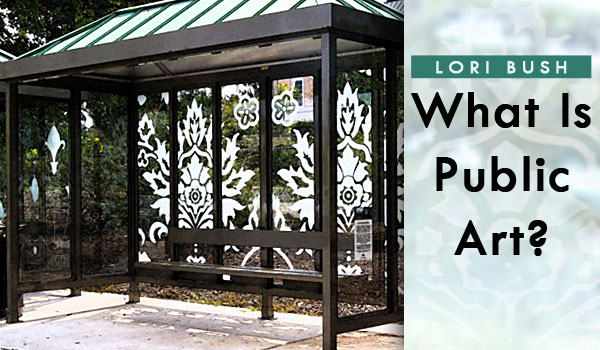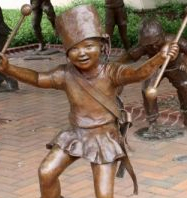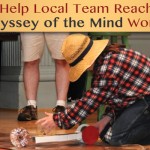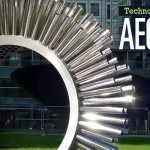Lori Bush: What Is Public Art?
Story and pictures from the blog of Lori Bush. Lori is an At-Large representative on Cary Town Council.
Cary, NC – When it comes to “art” I have to say that I am ill equipped to judge. Sure, I like playing with graphic art on my computer. And I love going to art museums; my favorites being MOMA in New York, the Art Institute in Chicago, and the Louvre, in Paris. I even have a daughter that has tons of artistic skills, loves to paint, and I am forever amazed by her talent.
My Lesson in Public Art
But, as they say, “art is in the eye of the beholder.” And THIS beholder is no true critic. I also know that what you might understand is “art,” I might think of as…well, *not* art.
So, when I heard that we were going to get an update on the Cary Public Art Master Plan, I was inquisitive and a bit nervous. (“Lord,” I thought, “please don’t let them ask me what I think of any sculptures or paintings. It’s a test I’m sure to fail.”)
But, as it turned out, I was in for a real lesson in “Public Art.” First, a definition.
What is Public Art?
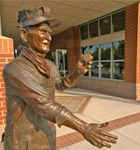 Public art refers to artwork, sculpture, murals and other media that has been planed and executed with the specific intention of being displayed in the public domain. It can be anything from special facades on buildings, to manhole covers, to landscaped areas.
Public art refers to artwork, sculpture, murals and other media that has been planed and executed with the specific intention of being displayed in the public domain. It can be anything from special facades on buildings, to manhole covers, to landscaped areas.
Cary has been a leader in Public Art – from the creation of a Master Plan in 2001, to the early beginnings of art that can be seen all around Cary. You see it in the “Railroad man” (pictured to the left) at the Cary Depot, around town at corners and parks, to the custom artwork on the Cary Bus Shelters. (Ok, I didn’t realize that the prints on the back of the shelters were historic wallpaper designs. Did you?)
Cary Public Art Objectives
The objectives are pretty lofty, but ideals we can all get behind, I think.
- Enhance the quality of life for every citizen of Cary
- Develop the identity of Cary through public art
- Support economic development goals
- Engage citizens of Cary in public art opportunities
- Promote a greater appreciation of public art
Master Plan 2012
So, the work session goals were to get feedback and direction from Council on the Cary Public Art Master Plan, while also getting an update on opportunities and ideas for incorporating public art into all types of projects.
Since I’m a visual kind of person, my favorite sections of these presentations are when we get real examples of art installations. In fact, at one point during the presentation, I noticed that one of the bronze statues on the presentation was made by the same artist that created our bronze statues outside of town hall. (Yes, I also like “Where’s Waldo… )
The idea was that public art can enhance Cary – whether it’s whimsical park benches, art to create a sense of community or share our history, or that can create a sense of “place.” The pictures were a great way for us to see this in action, and it was nice to see many of Cary’s installations used as examples of this.
Here are some of the examples used:
[wpcol_1half id=”” class=”” style=””]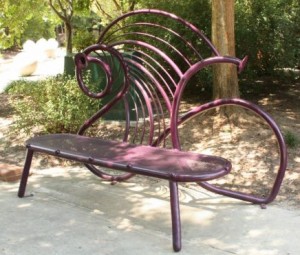 [/wpcol_1half] [wpcol_1half_end id=”” class=”” style=””]
[/wpcol_1half] [wpcol_1half_end id=”” class=”” style=””]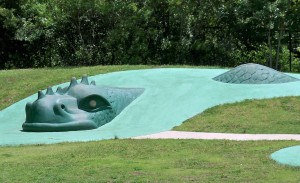 [/wpcol_1half_end]
[/wpcol_1half_end]
Interesting and Innovative
I especially loved the section they called “Diversity in Public Art” where we got a chance to see Art that was functional, playful and innovative.
[wpcol_1half id=”” class=”” style=””]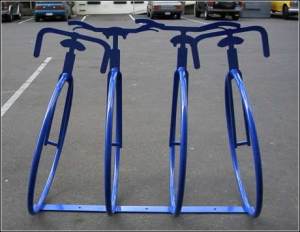 [/wpcol_1half] [wpcol_1half_end id=”” class=”” style=””]
[/wpcol_1half] [wpcol_1half_end id=”” class=”” style=””] [/wpcol_1half_end]
[/wpcol_1half_end]
Downtown
Another great section in the presentation was talking about how public art could be used in our downtown revitalization to complement the great pieces already there. Using art to create social gathering places and to visually mark the entrances were just some of the ideas.
Next Steps
Council agreed with most of the suggested recommendations put forward by staff and the consultants. (They all did a great job in this presentation, by the way.) The areas where we deviated with some of the recommendations surrounded funding and potential changes to the Public Art Advisory Board (PAAB).
1. Public Art Advisory Board: Most folks on council felt we didn’t need to be prescriptive when it came to the advisory board – that we had great representation on the board and will continue to keep the criteria and board membership somewhat fluid, rather than determining the EXACT skills/experience needed by board members Having a more open board gives us great feedback and insight from citizens from all walks of life.
2. FUNDING: One funding suggestion was a program called a “percent for art” – which is identifying a fixed percentage for public art for specific capital projects. Many cities do this today; Chapel Hil (1%), Durham (1%), Raleigh (0.5%), etc. Based on calculations made by staff, we are doing something like that already – but not as formal as that process. Again, most of the Council members were reticient to go that far, given that our program seems to be working well so far.

